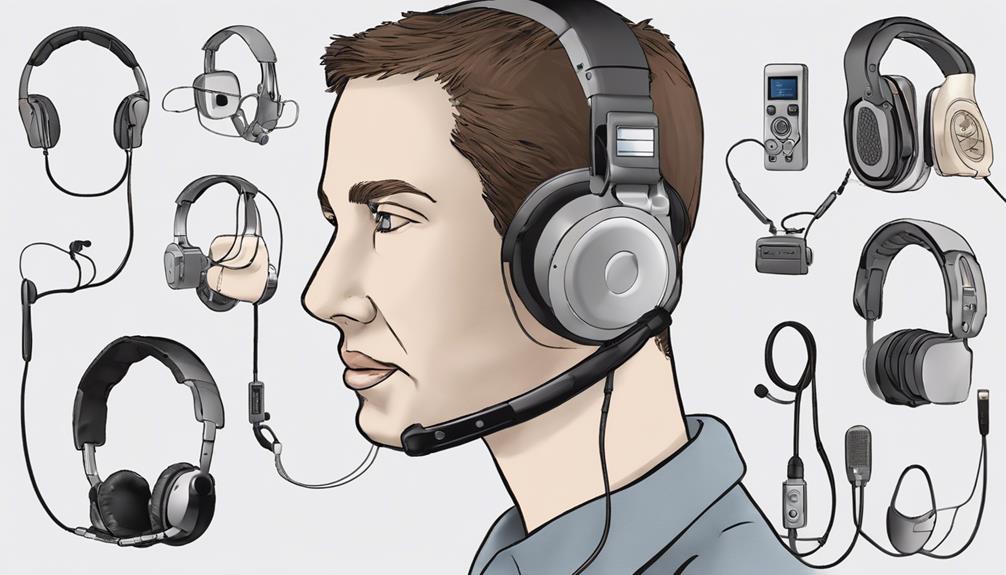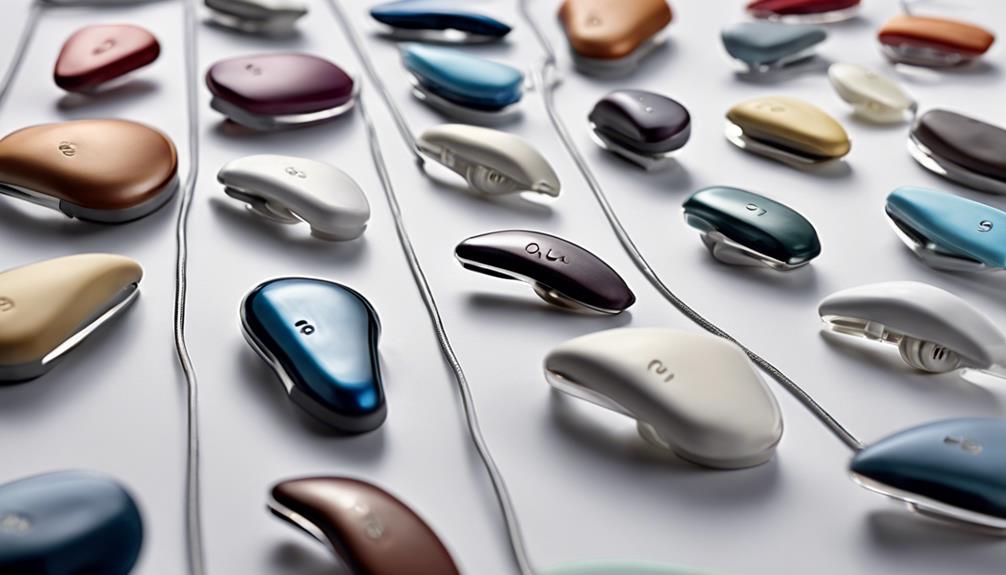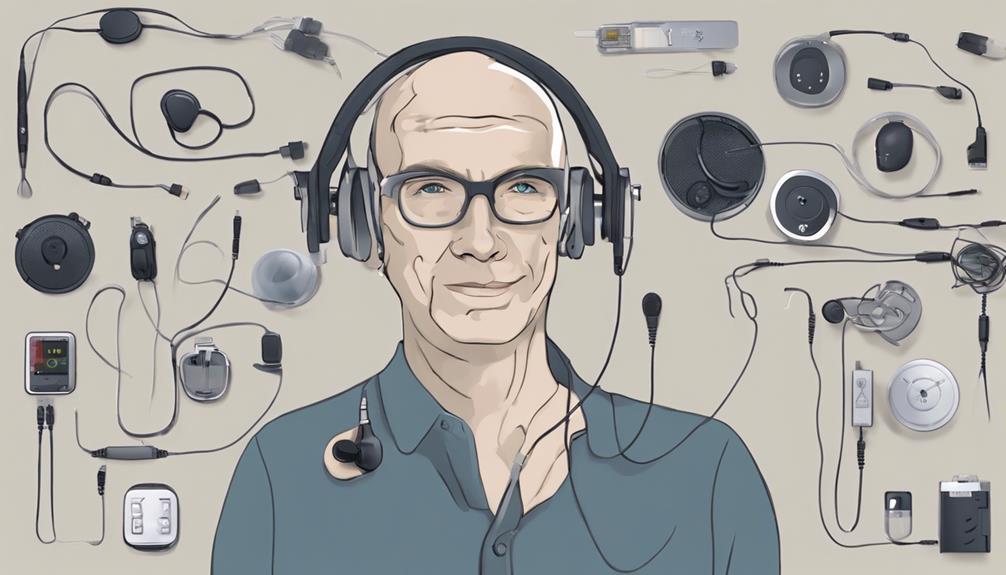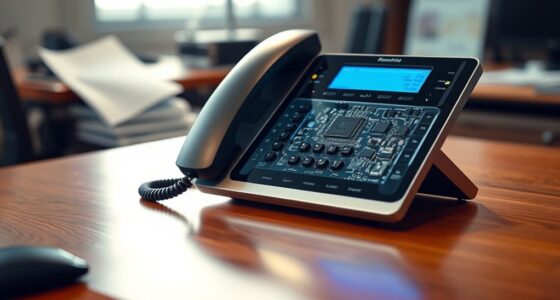Have you ever thought about the different types of ADA compliant assistive listening devices that are currently available in the market?
The range of options available might surprise you, from personal FM systems delivering direct audio to wireless notification systems that alert to everyday sounds.
These devices not only meet ADA standards but also cater to a variety of needs in different environments.
Let's explore the features and benefits of these assistive listening devices to gain a better understanding of their capabilities and how they can enhance accessibility for individuals with hearing impairments.
Key Takeaways
- ADA compliant devices include FM systems, induction loop systems, infrared systems, and hard-wired systems.
- ALS equipment ensures equal participation and meets technical requirements for sound quality.
- Neck loops facilitate T-coil integration, meeting ADA Standards for accessibility.
- Compliance with ADA standards fosters inclusivity and equal access for hearing-impaired individuals.
Types of ADA Compliant Assistive Listening Devices
When considering types of ADA compliant assistive listening devices, it's essential to understand the diverse options available to cater to varying hearing needs and environments. ADA Standards mandate the provision of assistive listening devices in assembly areas where audible communication is required for individuals with hearing impairments. These devices, such as FM systems, induction loop systems, infrared systems, and hard-wired systems, ensure equal participation for the hearing impaired in public spaces. Technical requirements like sound pressure levels and signal-to-noise ratio must be met to comply with ADA standards.
One commonly used type of assistive listening device is the induction loop system, which utilizes electromagnetic fields to transmit sound directly to hearing aids equipped with telecoils. This technology is beneficial for individuals with hearing aids as it eliminates background noise, providing clear sound directly to the user. In assembly areas, the induction loop system is particularly effective as it allows users to hear more clearly without the need for additional devices.
Features of Assistive Listening Systems

Assistive Listening Systems (ALS) encompass a range of essential features designed to enhance auditory accessibility for individuals with hearing impairments in compliance with ADA requirements. These systems are crucial in assembly areas where audible communication is vital for effective space utilization.
ALS equipment typically includes base stations and receivers that provide hearing assistance to patrons with hearing impairments. To meet ADA standards, signs indicating the availability of ALS must feature the International Symbol of Access for Hearing Loss, ensuring clear visibility for those in need of such accommodations.
ALS devices are required in Title II and Title III facilities under the ADA, with specific standards, such as ADA Standards 219 and 216.10, outlining the scoping and technical requirements for these systems. Additionally, ALS equipment is designed to be hearing-aid compatible, further enhancing the user experience for individuals relying on these devices for auditory support.
Technical Standards for Listening Devices
Exploring the technical standards governing listening devices reveals the meticulous criteria set forth to ensure optimal performance and compliance. Assistive listening systems must adhere to specific technical requirements, such as incorporating standard mono headphone jacks to facilitate universal compatibility.
Additionally, devices need to be equipped with neck loops to enable seamless integration with T-coils found in modern hearing aids, ensuring they're hearing-aid compatible. In assembly areas like classrooms and theaters, where assistive listening devices are crucial, there are precise guidelines in place to guarantee ADA compliance and effectiveness.
Moreover, these systems must meet stringent standards for sound quality, interference levels, and signal distortion to provide users with a clear and enhanced listening experience. Various ALS transmission methods, including hard-wired, induction loop, infrared, and FM radio, are utilized to meet the diverse needs of individuals and ensure compliance with ADA regulations.
Considerations for Choosing Listening Devices

Considering the technical standards for listening devices in assembly areas, our focus now shifts towards the crucial considerations when choosing appropriate listening devices. When selecting ADA compliant assistive listening devices, it's vital to keep in mind the following:
- Mono Headphone Jacks: Ensure the devices are equipped with standard mono headphone jacks to meet ADA technical requirements.
- Neck Loops: Opt for devices that come with neck loops, allowing hearing-aid compatible receivers to connect seamlessly with T-coils found in modern hearing aids.
- Hearing-Aid Compatibility: ADA mandates that at least 25% of the provided receivers must be hearing-aid compatible, catering to individuals with hearing impairments.
- Induction Loop Systems: Consider the option of induction loop systems as an alternative in assembly areas, offering another avenue for hearing assistance beyond traditional devices.
Importance of ADA Compliant Devices
Ensuring compliance with ADA standards for assistive listening devices is paramount to guaranteeing accessibility for individuals with hearing impairments in public spaces. ADA regulations mandate the use of ADA compliant assistive listening devices in assembly areas where audible communication is vital for participation. These devices, known as Assistive Listening Systems (ALS) equipment, are subject to specific technical requirements to meet the effectiveness criteria outlined in ADA standards. ALS equipment typically consists of base stations and receivers, with a focus on meeting minimum standards for hearing aid compatibility. By adhering to ADA regulations regarding ALS, organizations can provide equal access to information and communication for all individuals, fostering inclusivity in public settings. Below is a table highlighting the importance of ADA compliant devices in ensuring accessibility for individuals with hearing impairments:
| Key Points | Importance of ADA Compliance |
|---|---|
| Equal access for all individuals | Ensures inclusivity in public spaces |
| Technical requirements | Meets effectiveness criteria for ALS |
| Hearing aid compatibility | Enhances usability for individuals |
Frequently Asked Questions
What Are the ADA Requirements for Assisted Listening Systems?
When it comes to ADA requirements for assisted listening systems, it's crucial to ensure compliance with standards like ADA Standard 219 mandating ALS in spaces requiring essential audible communication.
Signs must display the International Symbol of Access for Hearing Loss as per ADA Standard 216.10. Additionally, a minimum of 25% of receivers provided should be hearing-aid compatible.
Meeting these guidelines is essential in spaces such as classrooms, theaters, and arenas where audible communication is vital.
What Are the Four Major Types of Assistive Listening Devices?
Well, the four major types of assistive listening devices include:
- Hard-wired systems, which use cables to connect the audio source to the listener.
- Induction loop systems, which rely on electromagnetic fields to transmit audio to hearing aids with T-coils.
- Infrared systems, which use light to send audio signals to receivers in line-of-sight.
- FM radio systems, which broadcast audio signals on specific frequencies for receiver pickup.
Are Assistive Listening Devices Are Only Available for Those Who Wear a Hearing Aid?
Absolutely, assistive listening devices aren't limited to just those who wear hearing aids. They cater to a wide range of hearing needs, benefiting anyone facing challenges in various environments.
These devices aren't exclusive to hearing aid users; they enhance sound quality for all. Their adaptability ensures improved listening experiences in diverse settings, making them a valuable tool for individuals seeking clarity and amplification.
What Is the Code for Assistive Listening Devices?
When it comes to the code for assistive listening devices, it's crucial to adhere to ADA Standard 219, which mandates their presence in assembly areas where audible communication is integral.
Signs must display the International Symbol of Access for Hearing Loss, and a minimum of 25% of receivers provided should be hearing-aid compatible.
Various types of ALS transmission, such as hard-wired, induction loop, infrared, and FM radio, must meet technical standards for volume, interference, and distortion levels.
Conclusion
In a world filled with noise, these ADA compliant assistive listening devices are like a symphony for the ears, bringing clarity and harmony to those with hearing impairments.
By meeting ADA standards, these devices not only provide accessibility but also a sense of empowerment and inclusion.
Let's continue to amplify the voices of those who deserve to be heard, ensuring that everyone can enjoy the beautiful melodies of life.











